#character: lucas bergman.
Explore tagged Tumblr posts
Text
tag dump! lune’s version - personagens.

#character: margaret howard.#character: nicholas seymour.#character: eleanor arundell.#character: theodore ruddick.#character: stephen armitage.#character: evelyn north.#character: gareth dawson.#character: claire rutherford.#character: sydney cameron.#character: benjamin vinchhi.#character: vincent dashwood.#character: carter andrews.#character: ethan hoffman.#character: camille abernathy.#character: olivia wyatt.#character: james carmichael.#character: lara kaplan.#character: jonathan killian.#character: constance cavendish.#character: lucas bergman.#character: nina harlot.#character: henrik sørensen.#character: marcus müller.#character: jax shepard.
1 note
·
View note
Text
"El never had romantic feelings for Mike"ers 🤝 "Mike had romantic feelings for El"ers
Y'all think y'all are arm wrestling bt it's actually called a handshake in most parts of the world.
Both come from some weird desire for romantic miIeven to have meant nothing/something for both.
Cuz everything has to be just right and fair and neatly tied in a bow. God forbid the gay boy have struggles with his sexuality or the straight girl get her heart broken in the process. Evil evil things. To have your feelings unrequited. Unless it's Will. Cuz he's single and has to stay single and pure and loyal and what not, and it's only temporary. Soon in a few years after the time skip at the end of the series he'll be rewarded for being reduced to a pathetic little sap with no social life beyond Jonathan, Mike and the horrors of having spidey sense for 2 seasons.
And yeah there will be cirque du soleil levels of acrobatics being performed to show why this story and narrative makes sense. And I'm not opposed to it for being that but just that on show that prides itself for show don't tell it neither shows nor tells and then there's outside the show telling by cast cuz inside the show showing was less subtle and more in the realm of not there at all.
MiIeven is NOT a "plot device" for Byler any more than Mike being revealed gay is a plot device for independent El. They're both self contained arcs for the respective characters. MiIeven thoroughly exploited the BSY dynamic with how their interactions were framed and played and okayed and filmed. It's incredibly condescending to fault the GA for buying into the self insert fantasy of nerdy boy gets supergirl when the show didn't shy away from profiting off of it. Regardless of Mike's impending sexuality. Especially because of the super ambiguity of Mike's sexuality it cannot be classified as anything but trope exploitation. Subversion where? Leaving some visuals here.
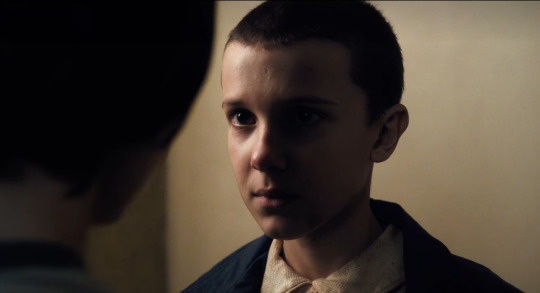
El initiating the kiss in S1E6
And I'd love it if anyone explains them to me that's not the tired af "El's idea of romantic love comes from her watching soap operas" cuz she was shown watching it once. She was stuck in a cabin with a TV so she watched TV most of the time and daytime is soaps. You know what she (also) watched regularly? Westerns. Miami Vice.
Also El did make the first move in s1e7 to kiss Mike. Before Mike ever kissed her in s1e8. And before the soap operas n all other things. Point being. The BSY has always been BSYing.
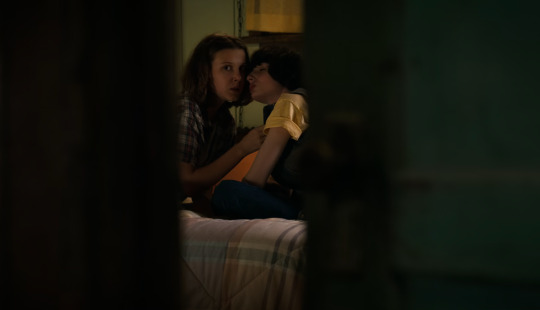
Poor babies being forced by Lucas, Nancy and daytime TV into making out and enjoying it. Tsk tsk. (S3E1)

A forced to be flustered and blushing El after talking to her boyfriend.

Time to make out some more. It hits different at 4:20. - Mike & El probably. Dunno it's on mute.
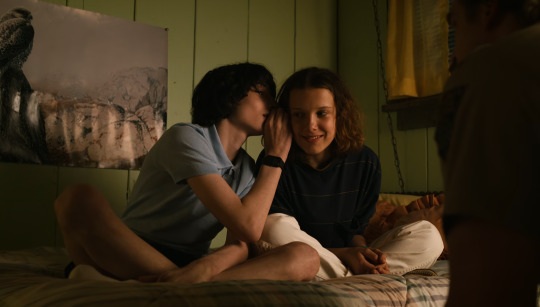
Naive but powerful fawn rebelling against father for nerdy boyfriend. Ya. White American thing cuz Mike would be pissing his pants if he were anywhere else or maybe anyone else. (Can you imagine Lumax this way?)
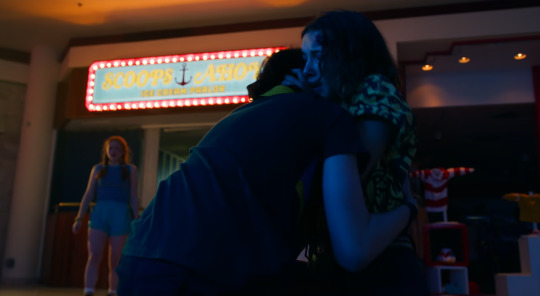
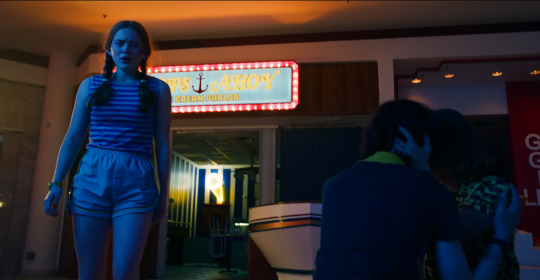
For God's sake your platonic soulmate and so called lesbian awakening's brother is dying there.
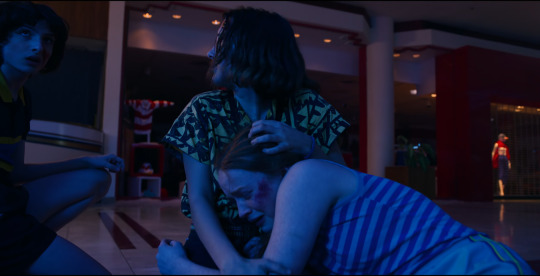
Don't even understand the point of this shot. Since Mike never looked Billy's way. Or comforted Max. A glance at El that, idk what it meant, no mike crow expressions to guide me.

Scenes from a Marriage (1973) dir. Ingmar Bergman
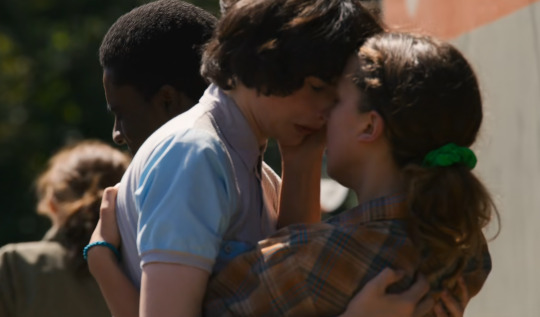
Scenes from a Marriage (2021) dir. Hagai Levi
There's an intentional way in which the MiIeven scenes (not just the kisses 🤮) are filmed in a more "adult" way as opposed to the "cute teenaged romance" way that some people purport it is in contrast to Lumax and Duzie. (I guess they didn't go through puberty.🤷♀️) Heck even Jancy, Stancy never looked this weird even though sex was shown/ implied. (Because they were played by actors born in the 20th century and even then they weren't 13 🤷♀️.)
MiIeven is not a plot device for Byler. It is fan service. The adults shipping them and comparing them to various other adult couples isn't outta nowhere. Please compute. Which is why it was stretched for 4 seasons.
As of NOW Mike's sexuality is still plausible deniability and the breakup too is neither here nor there. It's NOT straightbaiting. Lmao. Not at all. It's fan service. Leaving the OBVIOUS BSY aside, the point neither party were forced into anything nor were they doing it to keep appearances cuz canonically NOBODY cared. Not Dustin, not Lucas, definitely not Will and I'm sure neither did Max.
El was a willing participant and initiator and Mike was also not opposed to it until puberty monster/feelings caught up with him. El has shown her attraction to guys and it is okay. There's no need to take that away from her cuz that is also an experience of girlhood. She barely has any experiences anyway. Let her have that.
It's the same for Mike. He's not some evil monster for being gay. Not anymore than Joyce was for being with Bob out of convenience and the fact that she liked him n didn't hate him. Mike does love El and cares about her deeply as all of S4 shows.
So to sum it up. Yes I smooshed 2 posts cuz I couldn't be arsed talking about these 2 AGAIN. But Mike and El were independent agents when they decided to embark on their disastrous romantic journey and Born Sexy Yesterday is REAL.
P.S. If you find this shit cute and y'all roll your eyes over byler kissing n what not (even in fics goddamnit). Hit your head against a spiked wall till you can't no more. Piss and love. 💙💛
P.P.S. Mike's the clingy one. NOT Will.
#i need an award for taking these screenshots#i avoided the kisses cuz 🤮 but they only add to the evidence#byler#stranger things#anti mileven#i guess#wewe's opinionions#any mistakes are all yours#i ain't reading that shit again
28 notes
·
View notes
Text
1970s Cinema
The 1970s were a dynamic and transformative decade for cinema, with filmmakers pushing boundaries, exploring new themes, and producing influential films.
New Hollywood: The 1970s witnessed the continuation of the New Hollywood era, characterized by bold and innovative filmmaking. Directors like Martin Scorsese, Francis Ford Coppola, Steven Spielberg, and George Lucas emerged during this time, bringing a fresh and personal approach to their films.
American New Wave: The 1970s saw the rise of the American New Wave, also known as the "Movie Brats" era. Filmmakers like Scorsese, Coppola, and Robert Altman created gritty, character-driven films that tackled social issues and pushed the boundaries of storytelling. Notable films include "Taxi Driver" (1976), "The Godfather" (1972), "Jaws" (1975), and "Star Wars" (1977).
Blaxploitation: Blaxploitation films, primarily featuring African-American casts and urban themes, gained popularity in the 1970s. Films like "Shaft" (1971), "Super Fly" (1972), and "Foxy Brown" (1974) celebrated black culture and addressed social and political issues.
Disaster Films: The 1970s saw a surge in disaster films, often featuring star-studded ensemble casts and high-stakes scenarios. Movies like "The Towering Inferno" (1974), "Earthquake" (1974), and "Airport" (1970) captivated audiences with their suspenseful and action-packed narratives.
Horror Films: The 1970s is often referred to as the "Golden Age of Horror." Filmmakers like Wes Craven, John Carpenter, and Tobe Hooper revolutionized the genre with films like "The Texas Chainsaw Massacre" (1974), "Halloween" (1978), and "The Exorcist" (1973), which became instant classics.
Asian Cinema: The 1970s witnessed a surge in popularity for Asian cinema, particularly in martial arts films from Hong Kong. Legendary martial arts actors like Bruce Lee gained international recognition with films such as "Enter the Dragon" (1973) and "The Way of the Dragon" (1972).
European Art House Cinema: European art house cinema continued to flourish in the 1970s. Directors like Federico Fellini, Ingmar Bergman, and Werner Herzog produced influential films like "Amarcord" (1973), "Cries and Whispers" (1972), and "Aguirre, the Wrath of God" (1972).
Social and Political Films: The 1970s were marked by an increased focus on social and political issues. Films like "All the President's Men" (1976), "Dog Day Afternoon" (1975), and "One Flew Over the Cuckoo's Nest" (1975) reflected the era's cultural and political climate.
16 notes
·
View notes
Text
First thoughts about A Strange Way of Life because I've just finished watching it.
It does feel a bit too short given the format and the scope. The story could use a bit more of development and those 30 minutes feel more like 15. Keep it simple, but still complex enough.

It has an element of theatricality and artificiality which to me it's obvious that it's intentional. It's in the acting, the framing of the close ups, the shots on objects and also the way the characters move and the way they look, specifically the younger ones. The actors which play the younger version of Silva and Jake, but also Silva's son look too much like models out of a Tom Ford perfume ad. But given that this is a Saint Laurent production, I can see why it's like that. It reminds me of Luca Guadagnino's The Staggering Girl, a story woven out of a Valentino collection.
In terms of aesthetics, I can't put my finger on it, I haven't read anything extra about it and my memory is getting worse so my frames of reference are all over the place and might not make sense at all. I thought that Almodovar wanted to see what it's like to make an American Western from an outsider's perspective. Which is interesting. The European western and its variations across countries has a rich history and each bring their own elements on top of the formula. The Balcanic Western, the GDR Western and so on. This one lives in this sort of limbo. Does it feel like a Spanish Western? I don't know so I might be saying nonsense here.
My point it's that it looks like a blend of aesthetics. It's giving 70s experimental European film, but shot in digital in a way that makes the image eerie (my mind went to Bergman's Sarabande in terms of cinematography). The score is reminiscent of Old Hollywood and it's impecable. And at the same time, the sexual element of the story makes the film closer to erotica, but without any explicit sex. It's taking the aesthetic of it, but without going further. Actually I'd say it is erotic in small doses, but doesn't deliver in a way that as a spectator I might expect from watching the acting and the way it was filmed.
2 notes
·
View notes
Text
The Top 10 Best Movies That Left a Lasting Impact

Introduction: Movies have the extraordinary ability to transport us to different worlds, evoke intense emotions, and spark profound thoughts. Over the years, the film industry has produced countless masterpieces that continue to captivate audiences and shape popular culture. In this blog post, we'll delve into the top 10 best movies that have left an indelible mark on the cinematic landscape. 1. The Godfather (1972): Francis Ford Coppola's crime epic, "The Godfather," has secured its place as one of the greatest films of all time. With its impeccable storytelling, compelling characters, and iconic lines, this movie not only defined the gangster genre but also introduced audiences to the Corleone family's intricate dynamics. 2. Citizen Kane (1941): Orson Welles' groundbreaking film "Citizen Kane" redefined cinematic storytelling with its innovative use of narrative techniques and stunning cinematography. Exploring the life of media magnate Charles Foster Kane, the film has remained a symbol of artistic achievement and an inspiration for filmmakers worldwide. 3. The Shawshank Redemption (1994): Frank Darabont's adaptation of Stephen King's novella is a testament to the power of hope and friendship. "The Shawshank Redemption" continues to resonate with viewers through its portrayal of resilience in the face of adversity and the possibility of redemption. 4. Star Wars: Episode IV - A New Hope (1977): George Lucas' space opera "A New Hope" launched a cultural phenomenon that has spanned generations. The film's blend of epic storytelling, memorable characters, and groundbreaking visual effects revolutionized the science fiction genre and gave rise to an enduring franchise. 5. Pulp Fiction (1994): Quentin Tarantino's "Pulp Fiction" is a postmodern masterpiece that expertly weaves interconnected narratives, pop culture references, and sharp dialogue. Its impact on independent cinema and its influence on subsequent filmmakers make it an essential entry on this list. 6. The Lord of the Rings: The Fellowship of the Ring (2001): Peter Jackson's adaptation of J.R.R. Tolkien's fantasy epic brought Middle-earth to life in a way previously thought impossible. "The Fellowship of the Ring" set the standard for epic storytelling and showcased the potential of modern visual effects in creating immersive worlds. 7. Casablanca (1942): "Casablanca," directed by Michael Curtiz, remains a timeless romance and a classic example of Hollywood's golden age. The film's unforgettable dialogue, combined with the chemistry between Humphrey Bogart and Ingrid Bergman, has secured its place in cinematic history. 8. Jurassic Park (1993): Steven Spielberg's "Jurassic Park" redefined blockbuster filmmaking with its groundbreaking use of CGI and its portrayal of living, breathing dinosaurs. The film's thrilling adventure and its impact on both cinema and popular culture make it an undeniable classic. 9. Inception (2010): Christopher Nolan's mind-bending "Inception" challenges viewers' perceptions of reality and dreams. With its intricate plot and stunning visual effects, the film has sparked countless discussions and interpretations, solidifying its status as a modern masterpiece. 10. Gone with the Wind (1939): A true cinematic spectacle, "Gone with the Wind" remains a landmark in film history. Its sweeping narrative, stunning production design, and powerhouse performances, particularly by Vivien Leigh and Clark Gable, make it an essential inclusion on this list. Conclusion: These top 10 best movies have not only entertained audiences but have also significantly impacted the world of cinema. Through their storytelling, technical innovation, and timeless themes, these films continue to resonate with viewers and inspire future generations of filmmakers. Whether you're a fan of drama, science fiction, or romance, these movies offer a diverse range of cinematic experiences that have stood the test of time. Read the full article
0 notes
Text
July 14 Zodiac - Full Horoscope Personality
They are keen on all that occurs on the planet, what others do, their thought process, all of which permit them to assemble data, grow their experience, and foster their internal identities. They reflect nature, they think and mirror a great deal. They have an extraordinary creative mind and like to stare off into space. They are removed, alterable, very held, fairly modest - they show little interest in succeeding throughout everyday life. Curiously delicate and frequently held - very figuring out in their way of behaving. They partake in their family climate and are astoundingly appended to their moms. They are close to home individuals, genuinely connected to others. They like the past, old traditions and, by and large, all old things; they frequently gather different things. They have a seriously heartfelt disposition. Economical and persisting - they don't leave their place of employment in any event, when every other person does. They are exceptionally terrified of being mocked, which frequently makes them veil their sentiments and cause mistaken assumptions. They are fit for enduring and profound love. Blemishes: They show a specific latency of character and absence of drive. After times of movement and work, there is a few latency and dormancy where they need to keep away from any work. They are excessively glad, excessively partial to shallow functions; nonetheless, they are very severe in connections. What compromises them? The center time of your life will be upbeat and blissful. Notwithstanding, in light of the fact that they express an excess of detachment when they ought to be making an honest effort, the finish of their life could be ominous. Sicknesses in which they may be in danger incorporate stomach related messes, gastric fever, and ailment.
July 14 Zodiac - Full Horoscope Personality
Assuming that your birthday is July 14, your zodiac sign is Malignant growth July 14 - character and character character: wary, unbiased, ready, anxious, impolite, little and limited receptive calling: rancher, musician, attorney tones: orange, dark, earthy colored stone: feline's eye animal: duck plant: Chives fortunate numbers: 21,23,44,46,51,53 very fortunate number: 5 Occasions and Observances - July 14 Iraq: Republic Day. Nicaragua: Public Banner Day. France: French Public Day. July 14 Big name Birthday. Who was conceived that very day as you? 1901 - Gerald Finzi, English author (d. 1956). 1903: Irving Stone, American author (d. 1989). 1904: Isaac Bashevis Vocalist, Clean essayist, Nobel Prize Champ for writing in 1978 (d. 1991). 1907: Annabella, French entertainer (f. 1996). 1910: Lucas Demare, Argentine movie producer (d. 1981). 1910: William Hanna, American illustrator, producer and maker (d. 2001). 1911: Terry-Thomas, English entertainer (d. 1990). 1911: Gertrude Scharff Goldhaber, American atomic physicist of German Jewish beginning (d. 1998). 1912: Northrop Frye, Canadian abstract and scholar (d. 1991). 1912: Woody Guthrie, American performer (d. 1967). 1913: Gerald Portage, 38th American president somewhere in the range of 1974 and 1977 (d. 2006). 1916: Natalia Ginzburg, Italian author (d. 1991). 1916: Julio Watchman, Argentine screenwriter and movie producer (d. 1979). 1918: Ingmar Bergman, Swedish movie producer (d. 2007). 1919: Lino Ventura, Italian entertainer (d. 1987). 1921: Geoffrey Wilkinson, English scientist, 1973 Nobel Prize victor for science (d. 1996). 1922: Julio Cozzi, Argentine soccer player (d. 2011). 1922: Mario Recordდ³n, Chilean competitor (f. 1994). 1923: Dale Robertson, American entertainer (d. 2013). 1923: Robert Zildjian, American financial specialist (d. 2013). 1924: James Whyte Dark, English doctor and pharmacologist, 1988 Nobel Prize Champ (d. 2010). 1925: Marდa Asunciდ³n Catala Poch, Catalan mathematician and cosmologist (d. 2009). 1926: Harry Dignitary Stanton, American entertainer. 1928: Nancy Olson, American entertainer. 1929: Julio de Grazia, Argentine entertainer (d. 1989). 1931: Luis Pდ©rcovich Roca, Peruvian drug physicist and legislator (b. 2017). 1932: Helga Linდ©, German entertainer got comfortable Spain. 1933: Robert Bourassa, Canadian government official and financial specialist (b. 1996). 1937: Yoshiro Mori, Japanese State leader. 1938: James Christy, American cosmologist. 1938: Jerry Rubin, American social dissident (b.1994). 1938: Richard Rust, American entertainer (d. 1994). 1939: Peter Duryea, American entertainer (d. 2013). 1939: Karel Gott, Czech artist. 1939: Sid Haig, American entertainer. 1941: Ron Karenga, American essayist and extremist. 1942: Javier Solana, Spanish government official. 1943: Christopher Minister, English writer. 1945: Jim Gordon, American artist. 1946: Vincent Pastore, American entertainer. 1947: Navinchandra Ramgoolam, State leader of the Mauritius Islands. 1948: Berhaneyesus Demerew Souraphiel, Catholic strict and Ethiopian cardinal. 1949: Tommy Mottola, American music maker. 1953: Bebe Buell, American model and artist. 1955: L. Brent Bozell III, American essayist and dissident. 1956: Julio Chდ¡vez, Argentine entertainer. 1958: Miguel დ?ngel Cortდ©s, Spanish government official. 1959: Wilmer Barrientos, Venezuelan general. 1960: Kyle Gass, American entertainer, guitarist and artist musician, of the band Industrious D. 1960: Angelique Kidjo, Beninese artist musician. 1960: Jane Lynch, American entertainer. 1961: Jackie Earle Haley, American entertainer. 1966: Owen Coyle, English footballer and mentor. 1966: Tanya Donelly, American musician and guitarist, of the groups Midsection and The Reproducers. 1966: Matthew Fox, American entertainer. 1966: Ellen Reid, Canadian artist, of the band Life sized models. 1966: Brian Selznick, American artist. 1966: Ana Marდa Cuervo, Spanish cell researcher 1967: Karsten Braasch, German tennis player. 1967: Jeff Jarrett, American expert grappler. 1967: Robin Ventura, American baseball player. 1967: Michelle Yvonne Simmons, English physicist 1969: Kazushi Sakuraba, Japanese grappler. 1971: Antonio Carlos Ortega, Spanish handball player. 1971: Imprint LoMonaco, American expert grappler. 1971: Scratch McCabe, English guitarist, of the groups The Verve and The Dark Boats. 1971: Joey Styles, American reporter. 1971: Howard Webb, English ref. 1972: Deborah Postal carrier, Australian entertainer. 1973: Kota Hirano, Japanese mangaka. 1973: Candela Pena, Spanish entertainer. 1974: Erick Dampier, American ball player. 1974: Alberto Hevia, Spanish convention driver. 1974: David Mitchell, English entertainer and entertainer. 1975: Untouchable, American rapper, of the band Dark Looked at Peas. 1976: Andrდ©s Ospina, essayist and maker of Colombian radio. 1976: Diego Rivarola, Argentine-Chilean soccer player. 1976: Kirsten Sheridan, Irish producer. 1977: Mototsugu Shimizu, Japanese warrior. 1977: Victoria of Sweden, Swedish blue-blood. 1977: Adil Ramzi, Moroccan footballer. 1978: Mattias Ekstrდ¶m, Swedish motorsport driver. 1978: Kristy Wright, Australian entertainer. 1979: Bernie Castro, Dominican baseball player. 1979: Ariel Garcდ©, Argentine soccer player. 1979: Josდ© Moratდ³n, Spanish footballer. 1979: Scott Watchman, American entertainer and vocalist. 1982: Andrდ©s Borghi, Argentine chief and screenwriter, maker of the computer game "The Dark Heart". 1983: Igor Andrდ©iev, Russian tennis player. 1983: Kareem McLean Powell, Costa Rican soccer player. 1983: Juan Carlos Gutiდ©rrez, Venezuelan baseball player. 1984: Adriana Abenia, Spanish TV moderator, model and entertainer. 1984: Renaldo Balkman, American ball player. 1984: Alessandro Boccolini, Italian footballer. 1984: Mounir El Hamdaoui, Moroccan footballer. 1984: Samir Handanoviე?, Slovenian footballer. 1984: Nilmar, Brazilian soccer player. 1984: Fleur Saville, New Zealand entertainer. 1986: Alexander Gerndt, Swedish footballer. 1986: Dan Smith, English artist. 1987: Sara Canning, Canadian entertainer. 1987: Adam Johnson, English footballer. 1987: Dan Reynolds, American artist. 1988: Conor McGregor, Irish MMA warrior. 1988: Luis Lozenge, Paraguayan entertainer. 1989: Sean Flynn, American entertainer. 1992: Malena Luchetti, Argentine entertainer. 1993: Rubდ©n Garcდa, Spanish soccer player. 1993: Ailდn Salas, Argentine entertainer of Brazilian beginning. 1997: Cengiz დ?nder, Turkish footballer. 1998: Lucდa Garcდa, Spanish footballer
0 notes
Text

Star wars the last jedi
The Last Jedi is part of a new trilogy of films announced after Disney's acquisition of Lucasfilm in October 2012. It was produced by Lucasfilm president Kathleen Kennedy and Ram Bergman and executive produced by The Force Awakens director J. J. Abrams. John Williams, composer for the previous episodic films, returned to compose the score.
Yoda

Yoda was a legendary member of the Jedi Council as a Grand Master of the Jedi Order and member of a mysterious species capable of living for centuries. He was stronger than most in a connection to the Force and though he was small in size, he'd been so powerful and wise having had trained Jedi for several centuries.He is a small, green humanoid alien who is powerful with the Force and is a leading member of the Jedi Order until its near annihilation.
Darth vader
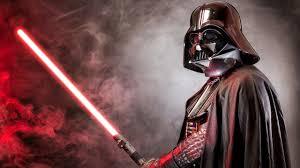
Darth Vader is a fictional character in the Star Wars franchise. The character is the central antagonist of the original trilogy and, as Anakin Skywalker, is one of the main protagonists in the prequel trilogy. Star Wars creator George Lucas has collectively referred to the first six episodic films of the franchise as "the tragedy of Darth Vader,has become one of the most iconic villains in popular culture, and has been listed among the greatest villains and fictional characters ever. His masked face and helmet, in particular, is one of the most iconic character designs of all time.
Boba fett
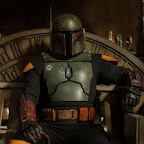
With his customized Mandalorian armor, deadly weaponry, Boba Fett was once regarded as one of the most fearsome and capable bounty hunters in the galaxy. An unaltered genetic clone of his father, bounty hunter Jango Fett, Boba learned combat and martial skills from a young age,the armor that he wears was passed down by his father, and he considers it his birthright, but not something he has necessarily earned in the eyes of the Mandalorian.
Chew baca
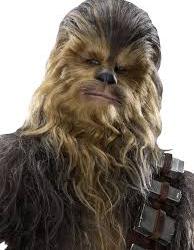
Known as Chewie to his closest friends, he was part of a core group of rebels who restored freedom to the galaxy during the reign of the Galactic Empire. Known for his short temper and accuracy with a bowcaster, Chewie also has a big heart and unwavering loyalty to his friends.Chewbacca, known affectionately to his friends as Chewie, was a Wookiee male warrior, smuggler, mechanic, pilot, and resistance fighter who fought in the Clone Wars, the Galactic Civil War, the Cold War, and the subsequent First Order-Resistance War.
BB 8
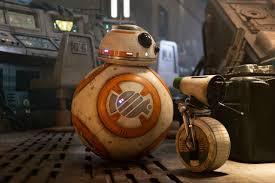
BB-8 accompanied Poe Dameron on many missions for the Resistance, helping to keep his X-wing in working order. When Poe's mission to Jakku ended with his capture by the First Order, BB-8 fled into the desert with a vital clue to the location of Luke Skywalker.The Resistance's ranks had been thinned to almost nothing, but the fight for galactic freedom would continue. BB-8 continued serving the Resistance as Poe helped General Organa rebuild the organization after Crait. He also kept Rey company during her Jedi training on Ajan Kloss.
C-3PO
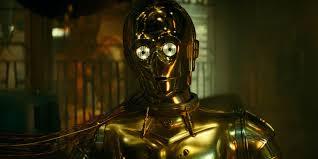
Built by Anakin Skywalker, C-3PO was designed as a protocol droid intended to assist in etiquette, customs, and translation, boasting that it is fluent in over six million forms of communication.Along with its astromech droid counterpart and friend R2-D2, C-3PO provides comic relief within the narrative structure of the films, and serves as a foil. Anthony Daniels has portrayed the character in eleven of the twelve theatrical Star Wars films released to date, with the exception of Solo: A Star Wars Story, where the character does not appear.
Luke Skywalker

Luke Skywalker was an Human male born a child of the Jedi Knight Anakin Skywalker and a Senator of Naboo, Padmé Amidala, Luke Skywalker was raised by the farmer aunt and a uncle Lars on the desert planet of Tatooine where he was kept hidden away from the Emperor and Dark Lord of the Sith Darth Sidious and his father Anakin, who fell to the Dark Side and became Darth Vader.
1 note
·
View note
Text
After Michelle Williams dropped out of Scenes from a Marriage, Oscar Isaac recruited Jessica Chastain to join the production via text messaging.

Excerpt:
Also this fall, Chastain appears in far less makeup and in more natural light in HBO’s new Scenes From a Marriage, based on Ingmar Bergman’s 1973 Swedish miniseries. Chastain plays opposite Oscar Isaac, her old Juilliard pal of 20 years, who texted her last-minute to jump in as the show was going into production during the COVID-19 pandemic.
“She’s one of the greats,” says Isaac. “She’s someone that has always inspired me and brought the best out of me, both as an actor and a person. Acting with her is effortless. Nothing needs to be planned in advance. As long as I’m present, I know anything can happen because there is total trust.”
Adds Chastain, “Because Oscar and I are so comfortable, we didn’t have to be polite. In some sense, we could read each other’s minds.”
Says Scenes From a Marriage creator Hagai Levi, known for his work on the original Israeli In Treatment, “Their old-time chemistry made their married dynamic appear very real and close on-screen.”
Of course, Chastain has her own dashing husband at home, fashion executive Gian Luca Passi de Preposulo. She promises that though both Scenes From a Marriage and The Eyes of Tammy Faye show relationships crumbling (as does Ibsen’s A Doll’s House, which Chastain hopes to do on the West End soon, after a production was cancelled because of the pandemic), her husband is “great.”
Usually, because there are so many people working on set, you have a lot of visitors and “there are just people everywhere,” Chastain says. But because of protocols, Preposulo wasn’t allowed to visit Chastain on Scenes From a Marriage. “There was never a break. I wanted to be reminded of my great husband, but it was so intense and so intimate. Takes were 25 minutes long. We were just fully invested in our characters.”
(rest of the article can be accessed via the source link below)
31 notes
·
View notes
Text
Also this fall, Chastain appears in far less makeup and in more natural light in HBO’s new Scenes From a Marriage, based on Ingmar Bergman’s 1973 Swedish miniseries. Chastain plays opposite Oscar Isaac, her old Juilliard pal of 20 years, who texted her last-minute to jump in as the show was going into production during the COVID-19 pandemic.
“She’s one of the greats,” says Isaac. “She’s someone that has always inspired me and brought the best out of me, both as an actor and a person. Acting with her is effortless. Nothing needs to be planned in advance. As long as I’m present, I know anything can happen because there is total trust.”
Adds Chastain, “Because Oscar and I are so comfortable, we didn’t have to be polite. In some sense, we could read each other’s minds.”
Says Scenes From a Marriage creator Hagai Levi, known for his work on the original Israeli In Treatment, “Their old-time chemistry made their married dynamic appear very real and close on-screen.”
Of course, Chastain has her own dashing husband at home, fashion executive Gian Luca Passi de Preposulo. She promises that though both Scenes From a Marriage and The Eyes of Tammy Faye show relationships crumbling (as does Ibsen’s A Doll’s House, which Chastain hopes to do on the West End soon, after a production was cancelled because of the pandemic), her husband is “great.”
Usually, because there are so many people working on set, you have a lot of visitors and “there are just people everywhere,” Chastain says. But because of protocols, Preposulo wasn’t allowed to visit Chastain on Scenes From a Marriage. “There was never a break. I wanted to be reminded of my great husband, but it was so intense and so intimate. Takes were 25 minutes long. We were just fully invested in our characters.”
— Jessica Chastain talking about Scenes From a Marriage in DuJour (x)
50 notes
·
View notes
Note
Hi Hi! I just found your blog and I'm in love with all your fankids (especially Os, he's a baby) and also your artstyle is cute! Mind if you give us a list of all the families in this wonderful au? Thank you in advance :DDD
Note: this post is now very out of date, check out the new directory page for a list of current ships and fankids!
Thank you! This truly means a lot. Os is one of my fav kids as well, he’s a good boy ;_;
I’m working on an actual directory of families but for now I’ll give a list of all the current kids and their parents under the cut! I also have a fankid directory here which is usually the most up-to-date list, as I do occasionally change things or retcon more minor characters I’m having trouble developing.
Kanto:
Fern Ketchum (Ash/Misty’s daughter; also Gary’s and Tracey’s stepdaughter)
Rory Greenwood (Red/Yellow’s son)
Amber Greenwood (Red/Yellow’s daughter)
Adam Harrison (Brock/Autumn’s son)
Bryn Harrison (Brock/Autumn’s son)
Briar Harrison (Brock/Autumn’s son)
Ivy Harrison (Brock/Autumn’s daughter)
Leo Sketchit (Misty/Tracey’s son)
Briony Sketchit (Misty/Tracey’s daughter)
Hazel Sonezaki-Oak (Bill/Daisy’s daughter)
Johto:
Harper Blair (Lyra/Silver’s daughter)
Levi Blackthorn (Lance’s son)
Jonathan “Johnny” Woodson (Jessie/James’ son)
Josephine “Josie” Woodson (Jessie/James’ daughter)
Hoenn
Olivia Hayden (May/Drew’s daughter)
Alyssa Hayden (May/Drew’s daughter)
Cecily Birch (Brendan/Wally’s daughter)
Dara Birch (Brendan/Wally’s son)
Jasper Stone (Steven/Wallace’s kid)
Orlando Stone (Steven/Wallace’s son)
William “Will” Powell (Max/Vivi’s son)
Sinnoh
Isabelle Berlitz (Dawn/Paul’s daughter)
Tristan Berlitz (Dawn/Paul’s son)
Alena ‘Lena’ Ilyinichna Morozova (Cynthia’s adopted daughter)
Emilia Stein (Reggie/Maylene’s daughter)
Matthias Stein (Reggie/Maylene’s son)
Elliot Hawthorne (Barry/Lucas’ son)
Cordelia Schoenberg (Ursula’s daughter)
Unova
Kezia Bergman-Weiss (Hilda/Bianca’s daughter)
Osbert Oleander “Os” Gropius Weiss (N/Hilbert’s son)
Lavender Griffith (Iris/Cilan’s daughter)
Basil Griffith (Iris/Cilan’s son)
Cassia Griffith (Chili’s daughter)
Ivan Tyrone “Grimsley Jr.” Grimsley (Grimsley’s son)
Alice Grayson (Hugh/Rosa’s daughter)
Kalos
Madeleine ‘Maddie’ Pascale (Serena/Shauna’s daughter)
Arianne 'Ari’ Pascale (Serena/Shauna’s daughter)
Felix Renaud (Calem/Korrina’s son)
Suzette Griffith-Delmotte (Cilan/Clemont’s daughter)
Nancy Thomas (Anabel’s adopted daughter, also sort of Looker’s adopted daughter)
Alola
Kai Rivera (Lillie/Hau’s son)
Leilani Rivera (Lillie/Hau’s daughter)
Linnea Kukui (Kukui/Burnet’s daughter)
Hana Mahi’ai (Mallow/Lana’s daughter)
#from the archives#this is soooooo out of date do not look at this unless you’re curious about how much has changed
3 notes
·
View notes
Note
i just wish i could just walk up to you in broad daylight and let everybody know // luke & blair
embora a vida de lucas nunca houvesse sido simples, esta sempre fora organizada, de uma forma ou de outra. para uma pessoa essencialmente prática, como gostava de pensar em si mesmo, a vida não tinha muito mistério: quando estava interessado em uma pessoa, por exemplo, era sempre direto, e não via razões para todos aqueles rodeios e joguinhos que muitos consideravam parte do envolvimento romântico. não tinha muito paciência para tudo isso, na verdade. ou, então, quando não estava feliz, ou até confortável, com uma situação, estava intrínseca em sua mente a perspectiva de que se afastar era o melhor remédio. para alguém que prezava tanto a simplicidade nos aspectos de sua vida a que referiam especialmente os relacionamentos, não existia o menor sentido naquele que mantinha com a cavendish há tempo suficiente para saber como a mecânica de ambos ocorria - e ignorar prontamente o seu bom senso quando os sentimentos constantes por ela o dominavam.
não existia, portanto, nenhuma explicação racional para o motivo de estar passando a noite com a mais nova, em seu apartamento, após toda uma semana atormentando seu melhor amigo e colega de banda - e terapeuta nas ocasionais necessidades - sobre o quanto simplesmente não aguentava mais a forma de blair lidar com a relação de ambos, e nem estava dando atenção para as mensagens que chegaram pelo contato dela desde a última vez em que se falaram. o que existia era a necessidade constante que lucas tinha dela, de ignorar todas os problemas em torno de seu relacionamento e aproveitar o momento com a mulher que habitava os seus pensamentos em uma intensidade que quase o deixava maluco, de tanto que não conseguia se livrar daquilo mesmo com os términos corriqueiros deles. términos estes que, por sinal, sequer sabia se poderia denominá-los dessa maneira, visto que luke não fazia a menor ideia de se poderiam se qualificar como um casal.
o problema em tudo aquilo ressurgia justamente com a fragilidade que os momentos divididos entre os dois possuíam. meras palavras poderiam ser suficientes para trazê-lo de volta a realidade, encarar tudo o que não gostaria, e relembrar exatamente qual era a razão do que acontecia entre eles não ser o que o coração adorava lhe enganar para acreditar que sim. a sentença que escutara da cavendish, portanto, se mostrava suficientemente eficaz em acordá-lo mais uma vez. lembrá-lo do quanto era detestável toda a situação em que era colocado simplesmente para manter uma imagem específica, o quanto se magoava toda vez que o assunto vinha à tona outra vez. “legal,” murmurou, não se esforçando muito para que o incômodo não se tornasse visível nos traços de seu rosto. “você não pode exatamente por qual razão dessa vez?” o questionamento escapou de seus lábios antes que pudesse conter a si mesmo. nada viria de bom em seguir aquele caminho, contudo, não conseguia simplesmente ignorar todo o significado no qual as palavras alheias estavam envoltas. “sinceramente, eu não sei que tipo de merda você parece tanto achar que vai rolar se te virem a dez metros de mim na rua.”
o bergman deveria saber que a noite acabaria daquela maneira, e conseguia até mesmo escutar a voz de seu melhor amigo em sua mente, mais uma vez afirmando que estivera avisado; lucas deveria aguardar por aquilo. porém, sempre ignorava completamente o seu bom senso quando blair entrava na história. talvez, uma declaração como aquela fosse exatamente o que precisava escutar para lembrar a si mesmo de não ser tão idiota. se afastou um pouco da mais nova, removando de seus ombros o braço que antes os contornava. “vai ser sempre a mesma coisa, não é?” a encarou ao perguntar, sabendo a resposta a seu questionamento antes mesmo que a mais nova se pronunciasse. não importava qual seria a resposta que ela o daria, afinal, porque no fim tudo se resumiria a uma mesma coisa: blair não estava disposta a levar o seu relacionamento para a luz do dia, em suas próprias palavras, e qualquer explicação que lhe desse naquele momento seria somente mais uma forma de enrolar tudo aquilo. estava envolvido com a cavendish por tempo suficiente para saber muito bem que não seria a última vez em que escutaria dela uma explicação batida.
passou a mão pelo cabelo castanho, deixando que um suspiro escapasse em sequência. a maneira como sempre retornavam para aquele ponto era extremamente irritante, repetitiva e cansativa. extremamente cansativa. “às vezes eu não sei nem mesmo se você dá a mínima pra mim.” luke admitiu, sentando na beirada da cama, de costas para ela. uma parte sua, desesperada para escutá-la afirmar realmente possuir todos aqueles sentimentos, mantinha esperança mesmo sabendo que ela gostaria de mantê-los escondidos dos olhares de todos os outros, e obviamente sentisse vergonha dele. e, por essa esperança, era impossível se sentir algo menos que patético. não fazia a menor ideia do que acontecera para que a loira o capturasse daquela maneira, sem que existisse a menor esperança de abandonar com facilidade o amor que visivelmente sentia por ela, e estava ainda mais perdido a como poderia resolver a situação em que se encontrava. era uma merda. “isso é cansativo pra caralho. nós não vamos a lugar algum, seguimos sempre voltando pra essa merda de problema, e eu continuo correndo atrás de você de qualquer jeito depois. de verdade, qual é a razão de você ter tanta vergonha assim dos outros saberem que você tem algo comigo?”
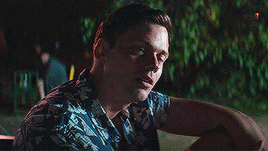
#in character: answers.#partner: lune.#character: lucas bergman.#⧽ ⠀ ⠀ ── ⠀ ⠀ maybe i'm too busy being yours to fall for somebody new ⠀ ⠀ ﹕ ⠀ ⠀ luke & blair.#odeio perder o fio da meada em meio de ask meu deussssssss#essa demorou muito mais que deveria por causa disso#e ainda ficou RUIM
1 note
·
View note
Photo

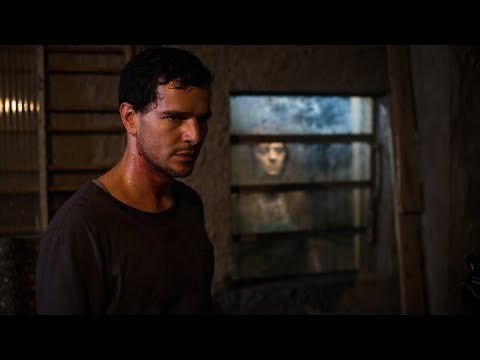
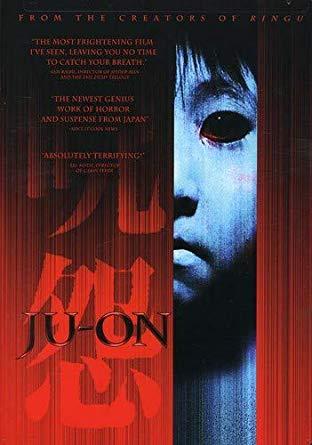
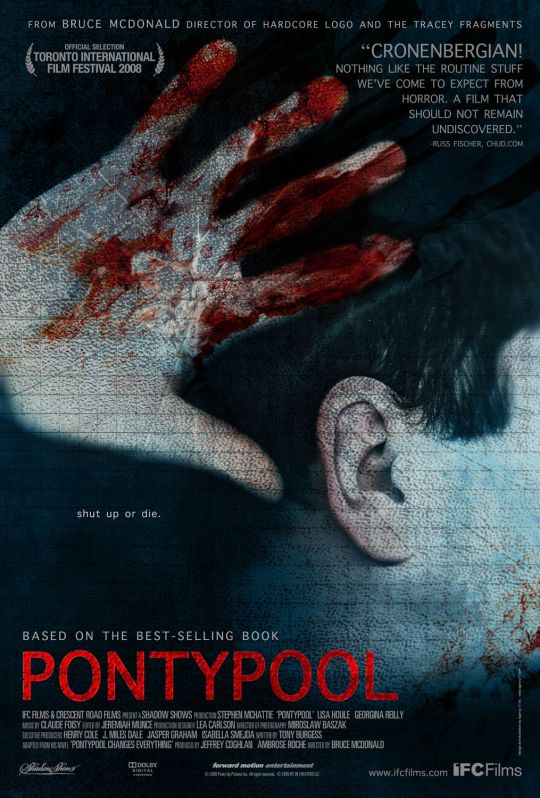
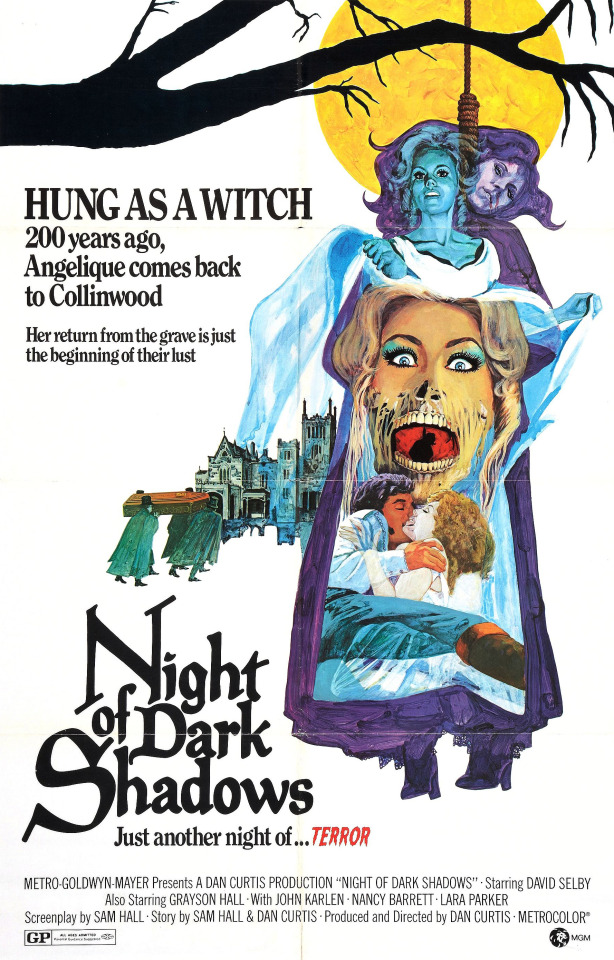
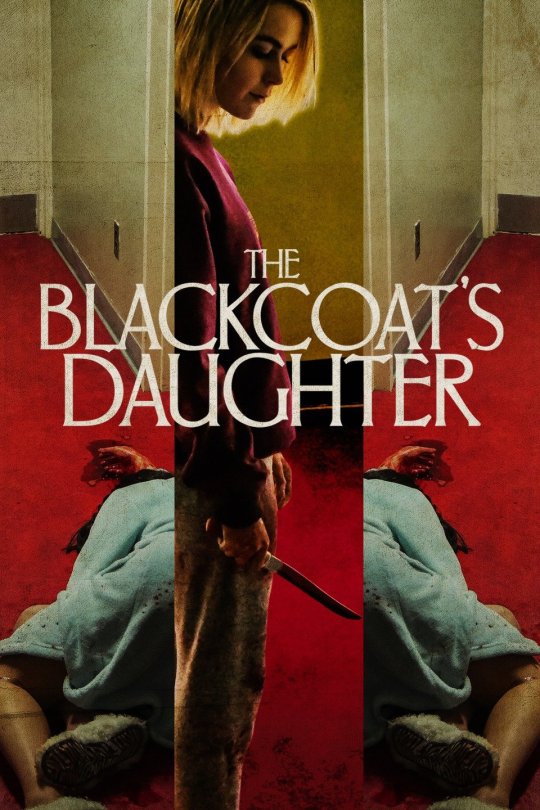

HOUSE OF DARK SHADOWS ('70) When Barnabas Collins leaves the small screen he discovers he can inflict a lot more blood & mayhem on the big screen #31horrorfilms31days
NIGHT OF DARK SHADOWS ('71) Quentin Collins inherits Collinwood in all its splendor, inhabited by the spirit of Angelique the witch, who only wants him to love her. Obviously Quentin's new wife is not into this situation, no way no how
GERALD’S GAME ('17) Couple's sex-zay weekend becomes much less so when he keels over dead while she's handcuffed to the bed. Surprisingly potent mix of super-squirmy thrills n chills w/ Triumph of the Spirit uplift
BODY BAGS ('93) trio of horror tales features a very early 90s brew of synth-y score, jokey cameos by Wes Craven, et al. & an overall sophomoric vibe. But also good performances + Debbie Harry. Body Bags = mixed bag
HEREDITARY ('18) This very dark blend of ORDINARY PEOPLE with ROSEMARY’S BABY features a wonderfully unhinged performance by Toni Collette and remains a sobering reminder that sometimes it does *not* get better
TRAIN TO BUSAN (’16) Excellent Korean Zombie Apocalypse thriller mixes edge-of-the-seat thrills with involving human drama - with characters you genuinely care about. At the end I was all (crying emojis)
THE TAKING OF DEBORAH LOGAN ('14) Harrowing found footage flick: a documentary film crew filming a woman dealing w/ early effects of Alzheimer's disease finds she is afflicted w/ something much worse - something *unholy*. A small gem, I recommend
THE REEF (’10) TFW you realize that the perfect killer shark movie was made nearly 45 years ago. But anyway here's yet another killer shark movie
THE BLACKCOAT’S DAUGHTER ('15) Weirdo teen girl & non-weirdo teen girl spend a lonely holiday weekend in an empty all-girl's school where things get super creepy in that arty-slow-burn-fractured-narrative fashion. Honestly, I was riveted
VIY ('67) Loser-y Russian seminary student must spend 3 scary nights praying over a dead witch's body. Only she's not so dead & wants to drag him down to hell with her. During the day he drinks much vodka, who could blame him? Enjoyed this charming folktale
TIGERS ARE NOT AFRAID ('16) del Toro-esque tale of orphaned street kids on the lam from a vicious drug cartel, alternately haunted & helped by ghostly victims of the cartel. Scary, funny & touching, a fairytale that will give you the feels
ANGST ('83) Psycho creep gets out of jail and wants to kill, proceeds to do so. Best part of this clammy little German film: the totes adorbs little dachshund, even the whackjob seemed to like it with its cute little wagging tail
PONTYPOOL (’07) Radio shockjock has a super bad day at work when a terrible virus breaks out that turns people into murderous zombies - esp when he learns how the virus is transmitted. Def recommend this excellent, downright existential Canadian chiller
HELL HOUSE LLC ('16) A crew of douchebags acquire an old hotel w/ unsavory past to open a Halloween haunted house, only to find themselves stuck in an overlong combination of THE BLAIR WITCH PROJECT w/ THE BEYOND - never a good place to be
SUSPIRIA ('18) Luca Guadagnino’s radical reimagining of Dario Argento's rococo 1977 masterpiece polarized horror fans: Those Who Damned vs Those Mesmerized. Count me solidly in the latter camp
16. DARLING ('15) Young woman takes housesitting job in huge, elegantly ritzy NYC apt, slowly unravels, eventually does damage w/ a big kitchen knife. All in beautiful B&W
HUMANOIDS FROM THE DEEP ('80) Monstrous mutants arise from the depths to terrorize a fishing village. Turns out they also want to propagate the species, Ew
BUCKET OF BLOOD ('59) Loser schnook works as a busboy in beatnik cafe, then finds success pawning off corpses covered in plaster as ART. This adorbs time capsule amusingly satirizes both beatnik culture & Art World bullshit
LITTLE SHOP OF HORRORS ('60) This cheap little quickie about a bloodthirsty plant that morphed into an 1982 off-Broadway hit & more is still engaging, w/ fun Borscht belt type humor & game cast, incl Jack Nicholson, genuinely funny as a masochistic dental pt
EATEN ALIVE ('76) Sweaty whackjob owns (A) rundown remote hotel, (B) large scythe, & (C) man-eating crocodile, all leading to (D) bizzaro murderous mayhem. Highlight: the croc (spoiler alert) eats a pre-Freddy Kruger Robert Englund
HOUR OF THE WOLF ('68) Artist & wife settle into life on isolated, windy island, where he inevitably begins to succumb to his inner demons. Ingmar Bergman's lone horror film is filled w/ all kinds of frightening imagery + existential dread. Good times!
THE BOY WHO CRIED WEREWOLF (’73) Little Richie: I'm scared, Dad's a werewolf! Let's not go camping with him! Everyone: He is not, you're tired, you had a nightmare, those dead people were killed by a wild animal, go to bed, etc. Repeat for 80 minutes
ONE CUT OF THE DEAD ('19) Japanese item features a low-budget film crew filming a zombie flick. Charming, funny, & way-meta - recommend not reading anything about it B4 watching (after this post, obvs)
JU-ON: THE GRUDGE ('02) A brutal double murder creates a relentless curse in this genuinely creepy Japanese ghost story. It's also one of ol' Rob's faves from the aughts
JENNIFER ('78) TFW the school bullies are being super horrible but then you remember Hey wait I have *supernatural power* over *SNAKES* and I could totally use that to my advantage! (hint: she totally does)
THE AUTOPSY OF JANE DOE ('16) Father & son coroners perform an autopsy on a mysterious corpse & must soon deal with several standard supernatural tropes including jump scares
HAGGAZUSSA ('17) Portrait of a woman branded as a witch, living in isolation outside a remote village, slowly losing her grip. Not a fun or action-packed watch, but if ur willing to meet it halfway, this German film might both mesmerize & horrify you.
IN THE TALL GRASS (’19) People get lost in an ominous field of grass that apparently stretches out waaay further than you'd ever think possible, not unlike the runtime of this movie
THE NIGHTSHIFTER (’18) In this clever Brazilian gem, guy working in a morgue learns the hard way that when the dead impart information, what they tell you should stay *strictly* confidential
MANDY (’18) Nicolas Cage dials it up way past over-the-top avenging himself on an evil cult & demon bikers in this flamboyantly campy, blood-soaked, LSD-infused revenge tale. Me = shaking my head, utterly hypnotized throughout
CANDYMAN (’93) Candyman Candyman Candyman Candyman (...)
INHUMAN KISS ('19) Young lovers must contend w/ the fact that her head detaches from her body every night to feed upon flesh in this romantic, wildly over-the-top dark fantasy from Thailand. Lovely way to wrap up this yr's #31horrorfilms31days extravaganza
#31horrorfilms31days#dark shadows#j-horror#tobe hooper#clive barker#ingmar bergman#stephen king#Horror Movies
4 notes
·
View notes
Text


youtube

Jabberwocky was a daily children's TV show designed for 5-10 year-olds that eventually went into national syndication. The original series ran Monday through Friday for over two seasons, from 1972 to 1974, on WCVB in Boston; the nationally syndicated version ran weekly and was rerun in the wee hours of Saturday mornings by many TV stations up until the 1990s.
Created and videotaped by WCVB-TV Channel 5 Boston, Jabberwockyfeatured real actors and puppets and various interstitial cartoons. The "show within a show" concept featured actress JoBeth Williams—in one of her earliest roles—and actor Tucker Smallwood as the "lead performer" and "director" respectively of a children's show. The actress and director were played by Joanne Sopko and Carl Thoma in the first season. Harvard professor and psychologist Jerome Kagan was an advisor to the program.
The friendly antagonist in most episodes was puppet character Dirty Frank, who popped up from whatever packing crate was convenient. As a representative alter-ego for children, Dirty Frank's inquisitive nature and his sloppy behavior drove the plot of most episodes.
Another main character was the helpful and venerable Mr. Buchanan (actor Robert Prosky), a human handyman-prop master who concocted various inventions to help children in his backstage workshop. In many episodes, Mr. Buchanan's failed inventions and grandfatherly insights led the characters toward answers to their questions.
The characters were seen in a studio set, but episodes often took them out into the Greater Boston area for miniature documentary segments.
Co-creators Fred Schilpp (Executive Producer) and Adam Villone (Head Writer) wrote many of the episodes along with Dewey Bergman and Joseph A. Bailey. Tucker Smallwood was also an occasional segment writer for the show. The animation sequences, and the puppets, were created by Tom and Bob Jurkowski. The original theme music was written and produced by David Lucas of David Lucas Associates, a commercial music house in New York. Gail Frank was Producer and eventually became Executive Producer. Peter Johnson, the puppeteer, was trained by Caroll Spinney (Big Bird) from Sesame Street and Children's Television Workshop.
The value-based program won several major broadcasting awards including a citation from Action for Children's Television, the first ever given to a commercial television program.
WCVB-TV continued to air Jabberwocky well after it went out of production, as it became part of the station's past legacy of original local programming (for over two decades, WCVB was known for producing more local programming than any other station in the U.S.). By the mid-to-late 1980s, the show could always be seen Saturday mornings at 5 a.m., followed by off-network reruns and later, in the 1990s, by syndicated children's programming that lead up to ABC's Saturday Morning lineup (most notably Cappelli & Company). However, WCVB did venture into original children's programming post-Jabberwocky; subsequent shows included The Nature World of Captain Bob, Pixanne, Rainbow, Rapmatazz and A Likely Story.
By 1999-2000, after a continued airing of more than 25 years, Jabberwocky (along with classic airings of The Nature World of Captain Bob, whose reruns also continued well past its production) vanished off the station's schedule.
3 notes
·
View notes
Text
Rian Johnson on His Favorite ‘Last Jedi’ Joke, Loving Kylo Ren and Arguing With Mark Hamill
— Newsweek | Dec 19, 2017
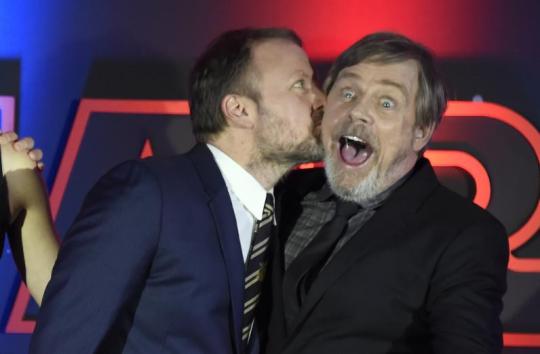
A long time ago, before they entered a galaxy far, far way, The Last Jedi writer/director Rian Johnson and producer Ram Bergman began their own epic journey as filmmaking partners. It started with Brick, the 2005 teen noir starring Joseph Gordon-Levitt. Though now regarded as a cult classic, that film made just $2 million at the box office. Johnson and Bergman went on to make two more feature films—the quirky indie romance The Brothers Bloom in 2008 and 2012’s Looper —before they were handed the keys to the Star Wars kingdom. Now, Johnson, 44, and Bergman, 47, are celebrating a $220 million opening weekend for The Last Jedi. The duo spoke to Newsweek about, among other things, finding their way in the mega-franchise.
Star Wars is a huge franchise—very different from other films you’ve made together. What were the key differences?
Rian Johnson: The most bizarre thing about this whole process was how it didn’t feel very different from the process on our other films. Once I delivered a script that everyone was excited about, we were all on the same page about the movie we were making. Disney and [Lucasfilm president] Kathleen Kennedy stepped back and let us make it, which was extraordinary given the size of this movie.
Ram Bergman: Rian delivered the first draft so far in advance, which doesn’t ever happen—like 13 or 14 months before we started filming, so we were able to prep. Rian knew exactly what he wanted, so they trusted him.
Did any of that trust come from your experience with Looper, which was a pretty ambitious sci-fi film?
Bergman: 100 percent.
Johnson: I wouldn’t want to speak for Kathy, but I have a feeling Looper was the thing that sent her our way. And it gave me a little [confidence]—if she likes what we did there, then maybe we can step in and find what’s personally interesting to us.
And what was personally interesting to you about the Star Wars franchise?
Johnson: My connection to it goes back to when I was a kid, so the thing as a whole. But I had to find the story and each of the individual characters—something that I could emotionally engage in. I think Kathy and Disney recognized that the reason the original movies had such a beating heart is because they were personal to [George] Lucas. They were his story.
As a young Star Wars fan, were you playing with the action figures and making up your own stories?
Johnson: Most of the stories I made up as a kid were probably terrible. [Laughs.] They probably would have ruined Star Wars. There would have been G.I. Joe crossovers involved. It would not have come out well.
Who was your favorite character in the original films?
Johnson: Luke Skywalker was always my guy. The way Lucas built the hero’s journey into the original movie… The hero’s journey is really just about growing up. It’s about finding your place in the world. As a kid, seeing Luke go from this very small world into a very big adventure, and feeling like you’re on the cusp of that—it’s scary! These movies give you a roadmap: It’s going to be scary, but it’s going to be OK. That was my entry point.
I read that you and Mark Hamill had different interpretations of Luke. Who was Luke to you, as a character for The Last Jedi specifically, and where was Mark coming from?
Johnson: I had to go from The Force Awakens, where the one big thing we know about Luke is that his friends are fighting the good fight and he’s isolated himself on an island. He’s taken himself out of the fight. So I had to figure out why, and it had to be consistent with Luke as I knew him. He was a hero. That meant he has to believe he’s doing the right thing by removing the Jedi from the equation.
And Mark—this character’s been part of his life for the past 40 years. He’s had a lot of time to think about what Luke would be if he came back. There’s no way that what I came up with was going to line up with what he had in his head. So we got into it, we talked about it, we argued, we went back and forth. I had to justify the choices I made to him. It’s not like there was ever a point where he said, “OK, that all makes sense to me.” But he got to a point where he said, “I can understand why you’re doing these things. I’m going to choose to trust you and go on this journey with you.” Which was incredibly generous of him creatively.
His first scene with Rey [Daisy Ridley] takes an unexpected direction. He throws away the lightsaber she is offering him. It’s a funny moment. What was the thinking there?
Johnson: I thought that's what Luke would do. He's made a purposeful choice to walk away from everything, and he's made a Herculean effort to do so. He's taken himself to, as he says, this unfindable place. And then this kid shows up, a symbol of everything he’s left behind. She holds [the lightsaber] out to him as if to say, “Here you go, here's what you've been waiting for.” And he tosses it and walks off. I knew it would be a moment that might be unexpected, but I wrote it because it felt like—honestly, what else would happen?
There’s a lot of humor in The Last Jedi. Do you have a favorite comedic moment?
Johnson: There’s a moment between Kylo and Hux [actor Domhnall Gleeson], when they’re in the shuttle at the very end. Kylo gives an order, and then Hux very loudly repeats it as if everyone in the room can’t hear him. Adam just gives him this look. We came up with that on the day. It’s a little moment, but I love it. I like finding situational humor in unexpected places.
Humor has always been a big part of these movies to me, and especially for this one because I knew we were going to some darker places. I also knew we were going to be sitting on an island discussing religion for a big chunk of time.
Is there a character in The Last Jedi that you particularly identify with?
Johnson: One of the more interesting for me was Kylo Ren, especially his notion of moving forward cutting off his past. That’s something that all of us can relate to. As you get older you realize that behavior might feel appealing and cathartic, but if you think that’s progressing—by throwing away what came before—you’re probably fooling yourself. The past is there, and it’s always going to be there. That’s the lesson.
And Adam [Driver] is such an incredible actor! That’s part of the reason I wanted to get the mask off him so early—to be able to see those eyes, to use everything that was there.
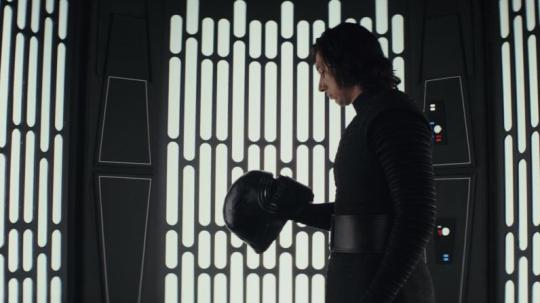
How much did fan theories influence you when you were writing?
Johnson: I started writing this while they were filming The Force Awakens, so the movie wasn’t out there yet. It was really nice because I didn’t have to deal with how the world reacted to that film.
Bergman: You can’t get deep into the fans and all that stuff. Clearly, you read here and there, but at some point, you really don’t pay attention.
Have you seen the reactions on Twitter?
Johnson: Star Wars fans are a passionate bunch, and whether it’s positive or negative, they’re gonna react really passionately. Weirdly, I feel able to personally disconnect and see it as all part of how much people care about these films. They care about the specific things they want from them, and whether they get them or not.
Can you give us any hints about your new Star Wars trilogy?
Johnson: One word would be “possibilities.” That’s the only word I have right now! Honestly, we’re starting with a blank slate. That was our pitch to Disney and to Kathy: Blue sky. New story, new characters, new places, and right now I’m just at the beginning of what it’s going to be. The potential is what seems so exciting.
— Newsweek
#this is a good interview#the last jedi#ram bergman#rian johnson#mark hamill#daisy ridley#adam driver#kylo ren#rey#luke skywalker#long post#interview#cast#star wars#tlj#*#uploads
422 notes
·
View notes
Text
Raiders of the Lost Ark and the Many Influences of Indiana Jones
https://ift.tt/38Z54Pj
When Raiders of the Lost Ark was released in 1981, it was like a jolt of lightning from out of the past. As with George Lucas’ Star Wars before it, here was a throwback to many of the cinematic touchstones high and low that Baby Boomers grew up with: Saturday morning serials, prestige Oscar winners from yesteryear, and even boys’ pulp magazines were sifted through, borrowed from, and recontextualized into one of the most thrilling action-adventure movies anyone had ever seen. Somehow Lucas, who was a producer on the project, director Steven Spielberg, and the whole Indiana Jones team were able to craft a movie simultaneously retro and new.
Of course the younger generations who were swept up in Indy’s adventures may not have noticed any of this. They were here to see Indy outrun a boulder. And as the years have passed, Raiders of the Lost Ark and the whole Indiana Jones trilogy has become its own influential touchstone, passed from one era to the next. But for that very reason, it’s fun to revisit where this now seminal classic in its own right came from 40 years later, and how it’s kept Hollywood traditions alive well into the next century.
The Adventures of Robin Hood (1938)
The first of several Michael Curtiz movies that will appear on the list, The Adventures of Robin Hood offers subtle influence on Raiders of the Lost Ark. And you can see it clearly in the scenes set at Marion Ravenwood’s bar in Nepal. First Indy enters the establishment by casting a large, heroic shadow on the wall; the sequence then relies on yet more shadows as the Nazis follow suit, projecting a looming darkness across the room; finally the scene ends with Indiana Jones shooting one of those baddies, and audiences only see the Nazi’s shadow die.
This is all inspired by Curtiz’s famous use of shadowed silhouettes during the climactic sword fight between Errol Flynn and Basil Rathbone in the best Robin Hood movie.
Busby Berkeley Musicals
The musical sequence that opens Indiana Jones and the Temple of Doom is centered around the song “Anything Goes,” which was written for Cole Porter’s 1934 stage musical of the same name. It was adapted into a 1936 Paramount Pictures spectacle starring Bing Crosby and Ethel Merman, however the way Spielberg stages the Temple of Doom sequence has more in keeping with 1930s musicals choreographed and/or directed by Busby Berkeley at Warner Bros.
As the filmmaker who pioneered the imagery of dozens of dancers and showgirls forming elaborate geometric patterns and kaleidoscopic shapes, Berkeley relied on complex overhead shots filmed from cranes. Eventually such elaborate staging fell out of favor in lieu of singular song and dance pairings like Fred Astaire and Ginger Rogers later in the decade, but in his time Berkeley was responsible for famed dance sequences in 42nd Street (1933), Gold Diggers of 1933 (1933), Gold Diggers of 1935 (1935), Footlight Parade (1933), and Stage Struck (1936). Spielberg obviously wanted to pay homage.
Clark Gable and Carole Lombard play with horses at the Encino ranch in 1939.
Carole Lombard
Less a direct cinematic influence than a source for characterization, Carole Lombard’s on and off-screen image as a tough-as-nails glamour girl was written into Marion Ravenwood. The character was of course eventually played with her own spark by Karen Allen, but Spielberg and company originally looked toward screwball comedy star Lombard for inspiration during the writing and casting stage. Spielberg even said about Allen that “Karen was the clear favorite because she had spunk and was a firebrand, and she reminded me of ‘30s women. She had that Irene Dunne and Carole Lombard [energy]. She seemed perfect for the part.”
Lombard is a particularly interesting comparison because the ‘30s and ‘40s actor got her start in Hollywood as a starlet who appeared in drawing room dramas, but then carved her path to stardom by playing fast-talking women in Ernst Lubitsch and Howard Hawks comedies, with the latter urging her to carry her own off-screen persona into her characters. Athletic, foul-mouthed, and able to keep up in terms of drink with the men in her life, she brought as much of that into her comedies as censors would allow. Also, perhaps coincidentally, her tragic death in a plane crash drove her husband Clark Gable into World War II with an alleged death wish, which somewhat mirrors a plot point in Raiders of the Lost Ark.
Casablanca (1942)
As yet another Michael Curtiz film, the impact of Casablanca is all over the Indiana Jones movies. A sweeping love story and terrific World War II melodrama filmed during the actual war, Casablanca is generally considered the best movie produced under normal circumstances during Hollywood’s Golden Age. It’s thus an easy touchstone for Spielberg, who emulates many ideas from the picture.
Likely the most noticeable is how both movies communicate international travel while filming on a backlot. Casablanca is not the first movie to show a map onscreen and then draw a moving line across it, which is then juxtaposed alongside international stock footage, but it’s the most famous movie to do so. You can see Casablanca’s influence every time Indy got on a plane, boat, or submarine.
Additionally, much of the relationship between Indy and Marion feels partially inspired by the wounded romance in Casablanca. While, as indicated above, there is not necessarily a lot of Ingrid Bergman’s Ilsa in Marion, Ilsa’s embittered bad blood with Rick (Humphrey Bogart) after a failed relationship is an obvious influence on Indy and Marion. Indeed, Allen’s first line to Ford in Raiders is “Indiana Jones, I always knew you’d come walking back through my door.” It seems a blatant riff on Rick saying, “Of all the gin joints in all the towns in all the world, she walks into mine.”
Gunga Din (1939)
The plot and much of the imagery in Temple of Doom is lifted nearly top to bottom from George Stevens’ Gunga Din, including many of the elements now cited as problematic in both pictures. In Gunga Din, audiences follow Cary Grant, Douglas Fairbanks Jr., and Victor McLaglen as a trio of British officers in 19th century British India. Over the course of the film, Grant’s Sgt. Cutter and his Indian sidekick Gunga Din (Sam Jaffe) discover a secret Thuggee cult, even though the religious order was thought to be extinct. Worse for the colonial powers, the Thuggee intend to expel British rule by following a fanatical, human sacrificing leader (Eduardo Ciannelli) to war.
Read more
Movies
Raiders of the Lost Ark Has the Greatest Exposition Scene in Movie History
By David Crow
Movies
How Marcia Lucas Saved Raiders of the Lost Ark’s Ending
By Kayti Burt
Almost all of the second Indy movie’s story about a hidden temple with an Indian cult leader who tortures white heroes comes from Gunga Din, as do several set-pieces and gags. Like Temple of Doom, Grant and Jaffee’s characters struggle with an elephant transporting them through the countryside, and much of the third act pivots around a rope bridge in which Thuggee followers are trapped as the ropes are broken, leaving the fanatics flal to their deaths.
It should be noted Thuggee gangs, which were said to practice ritualistic murder as a part of highway robberies, did probably exist in 17th and 18th century India, although they did not scheme for world domination, nor did they rip hearts from victims’ bodies. Some modern Indian scholars have argued their alleged religious practices were exaggerated or invented by the British authorities who used propaganda while stamping out 18th century gangs.
James Bond Movies
It’s no secret that 007 was a major influence on Indiana Jones. Spielberg originally wanted to make a James Bond movie in the 1970s. After Eon Productions turned him down—so as not to relinquish creative control to the new popular director of Jaws—Lucas pitched his buddy on the concept of what became Indiana Jones.
Elements of Bond still found their way into the Indy movies. Each film is a standalone adventure, and at least three out of four of them follow a rhythmic pattern where after an opening sequence shows the tail-end of Dr. Jones’ previous adventure, we return to his day-to-day life back home. Authority figures then arrive to assign his next quest. Also during all three of the original Indiana Jones movies, Indy had a new love interest from the start.
The influence is so blatant for Spielberg that he came up with the idea of introducing Indiana Jones’ father in Indiana Jones and the Last Crusade… and having him played by Spielberg’s favorite 007, Sean Connery.
King Solomon’s Mines (1950)
Indiana Jones is unquestionably influenced by Alan Quartermain. Whether intentional or not, most fedora-wearing adventurers and great white hunters of western fiction derive from this 1885 literary creation by author Henry Rider Haggard. So the question, then, is which version of Quartermain most directly influenced Spielberg and Lucas? While perhaps the 1937 movie adaptation produced by the Rank Organization (more on them below) was on Lucas’ mind given his nod to the company in Temple of Doom, the most famous iteration of Quartermain’s adventure in King Solomon’s Mines for Baby Boomers comes from a 1950 MGM movie released during Lucas and Spielberg’s youth.
That picture starred Stewart Granger as Quartermain, a white hunter living in what would become South Africa during the 19th century. There his services are requested by an English noble to retrieve his missing brother from the mysterious African interior and to find the legendary mines belonging to biblical figure King Solomon (sound familiar?). The 1950 film made plenty of changes, such as adding a female love interest for Quartermain and reducing the prominence of any black African characters in the already racist Victorian novel to even more primitive stereotypes. It also hasn’t aged particularly well. But it’s probably the closest to a “definitive” cinematic variation on the first adventure novel which created the concept of a “lost civilization” with connections to the Bible, a theme which Indiana Jones would return to time and again.
Lawrence of Arabia (1962)
As the beloved epic from most older Baby Boomers’ childhoods, David Lean’s Lawrence of Arabia is a gargantuan spectacle unlike any other. Filmed in breathtaking 70mm and in the actual deserts traversed by T.E. Lawrence, its visuals are still astonishing 60 years later. Particularly since they really went to those places.
Spielberg attempts to homage that mythical quality repeatedly in the Indiana Jones movies. In Raiders of the Lost Ark, Indy standing tall in the low light of a sunset as workers excavate the Well of Souls visibly emulates the majesty of Peter O’Toole’s Lawrence standing atop a train as men cheer his backlit silhouette. More directly, the final image of Indiana Jones and the Last Crusade is a pure reversal of the most magnificent sunrise you’ve ever seen. In Lawrence of Arabia, Lean captures the sun slowly unfurling over Arabia’s dunes before Lawrence and a companion travel across the sand. In Last Crusade, Indy and multiple companions ride directly into a sunset, which recreates the famous Lawrence of Arabia shot.
The Maltese Falcon (1941)
Arguably the first film noir ever made, The Maltese Falcon made Bogie a star and John Huston an A-list director. It also is a smaller influence on Raiders of the Lost Ark. The Maltese Falcon begins as a murder mystery before giving way to a larger plot in which a sordid collection of gangsters and criminals fight over a MacGuffin called the Maltese Falcon. Alleged to be an ancient, bejeweled prize from antiquity hidden beneath a common-looking facade, men kill and die for it as it’s passed back and forth, a la the Ark of the Covenant.
At the end of the movie, it’s revealed the Maltese Falcon is actually a fake—a forgery made from graphite. While the MacGuffins are a lot more powerful in the Indiana Jones movies, the idea of a magnificent ancient prize driving men mad carries over from The Maltese Falcon, and both Raiders of the Lost Ark and The Last Crusade riff on the reversal, with the Nazis initially finding only dust in the opened ark in Raiders, and the villain of Last Crusade being fooled into thinking the Holy Grail would be made of gold and covered in jewels.
Plus, Peter Lorre’s slimy and giggling depiction of the character Joel Cairo in this movie (as well as several others) appears to be an inspiration for the Nazi played by Ronald Lacey in Raiders.
The Man With No Name Trilogy
Sergio Leone’s seminal Spaghetti Western trilogy—which includes A Fistful of Dollars (1964), For a Few Dollars More (1965), and The Good, the Bad and the Ugly (1966)—were a significant inspiration for Spielberg when he first imagined Indiana Jones’ personality. While there’s more than a hint of Humphrey Bogart to how Harrison Ford plays Indy, there’s also a darker menace, particularly in his first outing. During Spielberg, Lucas, and screenwriter Lawrence Kasdan’s famed story conference for Raiders, the transcripts of which have been saved for posterity, Spielberg name drops a lot of influences for Indy’s personality, including Toshirô Mifune, who starred in multiple Japanese movies directed by Akira Kurosawa. He also mentions Clint Eastwood’s Man with No Name.
Read more
Movies
How Raiders of the Lost Ark Continues to Influence Pop Culture
By Kayti Burt
Movies
Indiana Jones 5 Set Photos Reveal New Characters and Movie’s Setting
By John Saavedra
In truth, the Man with No Name is directly inspired by Mifune’s samurai in Yojimbo (1961), but we felt the final allusions in Raiders more overtly leaned toward Leone’s Westernized interpretation of the desperado. You can see it in the first scene when we’re introduced to Indiana Jones through a series of rapidly edited together close-ups of an enemy drawing a pistol, Indy’s whip (as opposed to his own revolver), and finally an extreme close-up of Indy’s eyes, shaded beneath a fedora, as he steps into frame while disarming a foe. It’s Spielberg’s version of countless Leone shootouts starring Eastwood. To further accentuate the influence, Indiana Jones and the Last Crusade is filmed in the same Spanish desert as The Good, the Bad and the Ugly when Indy and his father travel to a fictional Middle Eastern country on their quest.
The Rank Organization Logo
A small nod occurs at the top of Temple of Doom when the Paramount Pictures logo turns into an engraving of a mountain on a Chinese gong that is soon rang in. This is an overt homage to the opening title card of movies produced by the British film studio the Rank Organization, which began with a man also hitting a gong. The studio produced early Hitchcock classics like The Lady Vanishes (1938) and seminal ballet ghost story, The Red Shoes (1948). We imagine Lucas and Spielberg were winking at some of Rank’s pulpier material though, like the first adaptation of King Solomon’s Mines (1937).
Republic During the 1930s-1950s
Admittedly, I’m no expert on the weekly serials that ran in movie houses each Saturday morning during the 1930s, ’40s, and ’50s. However, George Lucas clearly is since they visibly informed Star Wars as much as Indy, what with interstellar adventures like Commander Cody. On the other side of the paradigm there were a cornucopia of mid-20th century Republic serials about adventurers and masked superheroes fighting Nazis that clearly made an impact. One that seems like a specifically heavy influence is Secret Service in Darkest Africa, a Republic serial from 1943 which despite its title is set in a largely lily-white Casablanca (original, ain’t it?).
Over the course of its week-to-week adventures, American secret agent Rex Bennett (Rod Cameron) infiltrates the Third Reich by posing as a Nazi officer in the SS. However, his cover is blown when he goes to Africa to beat the Nazis from discovering an ancient Muslim Tomb which is said to have a scroll that will tell “the Muslims” how to fight in World War II (yep). With incidents like Rex out-swimming German boats to impersonating German personnel, it all has an air of Indy.
Another serial with special consideration is Republic’s Zorro’s Fighting Legion (1939). One of the more popular serials from the FDR years, this classic more than any film I’ve seen likely inspired Lucas for emphasizing Indy’s bullwhip. As with the opening scene of Raiders of the Lost Ark, Zorro uses his whip to disarm foes, swing out windows, and even escape an avalanche. But the stunt that most clearly inspired Indy is a scene where Zorro falls between the horses and under the wheels of a stagecoach, hanging by his trusty fingers. He then catches the back of the carriage and climbs on top to reach the driver’s seat. It’s spectacular, as seen in the above clip, and more or less taken whole cloth for the same stunt from Raiders.
Secret of the Incas (1954)
I’m not sure if Lucas ever publicly spoke about Secret of the Incas, but this Paramount Pictures pulp had a heavy, heavy influence on Raiders of the Lost Ark. Like the Indiana Jones movies, the filmmakers behind it were clearly big fans of The Treasure of Sierra Madre (more below). Also like Indy, they took it in a decidedly more Saturday morning direction. A young Charlton Heston stars in this movie as Harry Steele, a fedora-wearing, leather jacket sporting, adventurer who is after fortune and glory, kid. Fortune and glory. When Harry gets wind that some dastardly archeologists are on a dig down in Peru, having discovered a lost ancient kingdom, Harry gets the bright idea of sneaking onto their dig site and stealing a golden sunburst right out from under them.
Sounds familiar, eh? It’s nowhere near as exciting as Indy, but the basic framework about a gold-seeking cad in a fedora fighting rivals over a buried, priceless MacGuffin is all from here, complete with a love interest who is wooed by Harry’s rival.
Ursula Andress in She (1965), Hammer Studios’ campy adaptation.
She (1887)
This 1887 novel by H. Rider Haggard is considered one of the first and most influential adventure yarns ever written. It’s also an incredibly racist work authored by a Victorian Englishman who spent seven years living in South Africa, making it a prime example of what’s now dubbed “imperialist literature.” Nonetheless, it influenced many other authors, including Rudyard Kipling, J.R.R. Tolkien, Graham Greene, and others who’s work, in turn, influenced Indiana Jones.
She is worth separating from Haggard’s other most popular novel, King Solomon’s Mines, because unlike that story, there was never really a definitive film adaptation of this book. However, Merian C. Cooper of King Kong fame (also an adherent to Haggard’s adventure stories) attempted an Art Deco interpretation of the text in 1935.
In the original story, readers follow the adventures of Horace Holly, the ward of explorer Leo Vincey. Together they discover a lost city in the African interior in which primitive natives worship an immortal white woman whom they refer to as “She Who Must Be Obeyed.” In fact, she is so beautiful that any man becomes her slave after one look into her eyes. Curiously, the Indiana Jones movie which most emulates this is Indiana Jones and the Kingdom of the Crystal Skull, in which a lost “kingdom” hidden in the Amazonian jungle is protected by primitive natives who worship, if not a white woman goddess, then crystal skulls and the godlike alien beings they belong to. Also if you look into those crystal skulls’ eyes for too long…
The Treasure of Sierra Madre (1948)
Reportedly Huston’s favorite collaboration with Bogie, The Treasure of Sierra Madre is the most influential work on Indiana Jones’ appearance and devil-may-care attitude. This post-war picture stars Bogart as Fred C. Dobbs, a fedora-wearing, hard-drinking, malcontent who becomes obsessed with finding buried treasure. Also prone to wearing a nice weathered leather jacket, Dobbs is a nastier piece of work than Indy. When we meet Dobbs, he’s a drunk with a violent temper. After he and business partners discover gold up on the Sierra Madre mountain, he becomes consumed by greed and ultimately attempts to murder his only friend. He also challenges bandits to a shootout to protect his prize, which eventually results in his death.
Indy never goes so far—which may be why he doesn’t end up getting macheted. But Ford’s visage, as well as the world weary grumpiness he reserves for Belloq or his father, is taken straight from life up on the Sierra Madre.
cnx.cmd.push(function() { cnx({ playerId: "106e33c0-3911-473c-b599-b1426db57530", }).render("0270c398a82f44f49c23c16122516796"); });
The post Raiders of the Lost Ark and the Many Influences of Indiana Jones appeared first on Den of Geek.
from Den of Geek https://ift.tt/2YARK1D
0 notes
Text
Author Interview: Geoffrey Ashley

Tell us about yourself and your books.: Currently banished to Hollywood (most likely as hellish, cosmic payback for some seriously bad behavior in a past lifetime), I am a writer and photographer who gets by mostly on my good looks and charm...which, unfortunately, tend to manifest themselves primarily as extremely angry freeway driving and cripplingly uncontrollable sarcasm. Ironically though, I enjoy long, romantic walks in fall weather and am extremely kind to animals and the elderly. I am the writer and creator of the serialized graphic novel FRONTIERS (http://FRONTIERS.tv), winner of the “Best of Los Angeles” award for “Best Cyberpunk Comic Book Series.” FRONTIERS has been called a "PULP FICTION STAR WARS" — fueled by sex, violence and sarcasm — which tells the story of a man destined to destroy humanity...and why that really isn't such a bad thing. This sci-fi adventure comic for adults is drawn in a raw style and packed with action, romance and dark humor, all wrapped in a classic cyberpunk warning about corporations and technology run amok. And its anti-corporate and anti-authoritarian themes could not be more timely than they are right now. I have also adapted the graphic novel into a scripted podcast featuring the narration of John deLancie ("Q" from STAR TREK: THE NEXT GENERATION) and the voices of Dan Donohue ("Shriv" from STAR TREK: BATTLEFRONT 2 and FOR ALL MANKIND), Katherine Cunningham (YELLOWSTONE and CONDOR). David Anders (IZOMBIE, ALIAS and HEROES and the Emmy-nominated Marieve Herrington (BIG CITY GREENS). My primary writing influences are comedy and genre and my scripts are often a unique fusion of the two. My lead characters are generally me, just taller, braver and more self-assured. Also, I am a Sagittarius...in case you were wondering. I currently live in Los Angeles with my brilliant photographer wife, two cats and a dog. Do you have any unusual writing habits? When I get into the groove of writing, my schedule generally starts to shift later and later until eventually I'm going to bed around 8 or 9 a.m. It's not ideal from a health — or a marriage — standpoint, but I do tend to get a lot of work done overnight. I also have a cat who insists on wedging himself in the tiniest of space between my leg and the side of my chair when I write. He is my co-pilot...and, as far as he is concerned, I couldn't do any of this without him. What authors have influenced you? My influences are an amalgam of literature, film and television, including classic authors like J. D. Salinger, Robert Heinlein, Philip K. Dick and Kurt Vonnegut to television and film writers like George Lucas, Gene Roddenberry, Dan Harmon and Chris Carter. Do you have any advice for new authors? Do what you love and just keep doing it for yourself. No matter what. If you're a geek like me and you write because it's fun, it interests you and it's a great way to spend your time, eventually you'll end up with a body of work you can be proud of before you even realize it. And the more work you have, the better the chance you'll get somebody interested in something and then be able to get out of what ever hellish day job keeps a roof over your head and into something that will kill your soul in a new and entirely different way. What is the best advice you have ever heard? "Don't lick that." Granted, it's not good advice for every situation. But, if you exercise good judgment, you'll be able to figure out when to heed it and when not to. What are you reading now? SLAUGHTERHOUSE 5 by Kurt Vonnegut, A WARNING by Anonymous and the 1955 CHEVROLET SHOP MANUAL What's your biggest weakness? Chocolate, procrastination and Alison Brie. What is your favorite book of all time? ROUND UP THE USUAL SUSPECTS: THE MAKING OF "CASABLANCA" — BOGART, BERGMAN AND WORLD WAR II by Aljean Harmetz. It's a history of the making of CASABLANCA and it's fascinating. What has inspired you and your writing style? Laziness, fear, the aforementioned procrastination and manic spurts of creativity that tend to force me out of bed in the dead of night. Also, the desire to tell stories that interest me. Should they wind up interesting anybody else...well, that's just coconuts. What are you working on now? Currently hammering out outlines of the many ongoing storylines of FRONTIERS, as well as converting it into a television project. I'm also working on a novelization of FRONTIERS, as well as some other television comedies and light dramas. What is your method for promoting your work? I have a real knack for doing anything promotionally, as long as it turns out to be largely fruitless. I'm hopeless at social media and too broke to bring in a professional publicist. So, I just keep banging away until the day things hit critical mass and FRONTIERS becomes the viral sensation it deserves to be. However, the people who have read it uniformly love it. And if they didn't, they'd have no reason not to completely gut punch me with that fact...so I believe them completely. What's next for you as a writer? Grocery lists, to-do lists...and continued expansion and exploration of the FRONTIERS universe and its characters. It is a rich and vast canvas for storytelling and I can't wait to find out more about what lurks there so I can share it with an audience. Do you write graphic novels or comic books? Yes. I have yet to find anybody who can give me a true definition of the difference between the two. So, I treat comic books as exciting installments of long-form graphic novels and graphic novels as compilations of ongoing comic book stories. How well do you work under pressure? Being a virtually-professional procrastinator who has maintained his amateur status for the day the Olympics finally includes it as an officially-recognized sport, pretty damned good. Pressure gets things boiling in the ol' brain pan. And the desperation a deadline can bring often leads to the most unique and exciting creations. How do you decide what tone to use with a particular piece of writing? Nature decided it for me a long time ago. Adventurous and mildly-sarcastic. I think action, danger and suspense are awesome. But, if you can't cut them with a little humor, a project runs the very real risk of taking itself too seriously. And aside from my unshakeable opinion that THE ADDAMS FAMILY kicks THE MUNSTERS' ass, I rarely take myself or my work too seriously. Author Websites and Profiles Geoffrey Ashley Website Geoffrey Ashley Amazon Profile Geoffrey Ashley Goodreads Profile Geoffrey Ashley Author Profile Other Bookseller Geoffrey Ashley's Social Media Links Facebook Profile Twitter Account Instagram Account YouTube Account Read the full article
0 notes